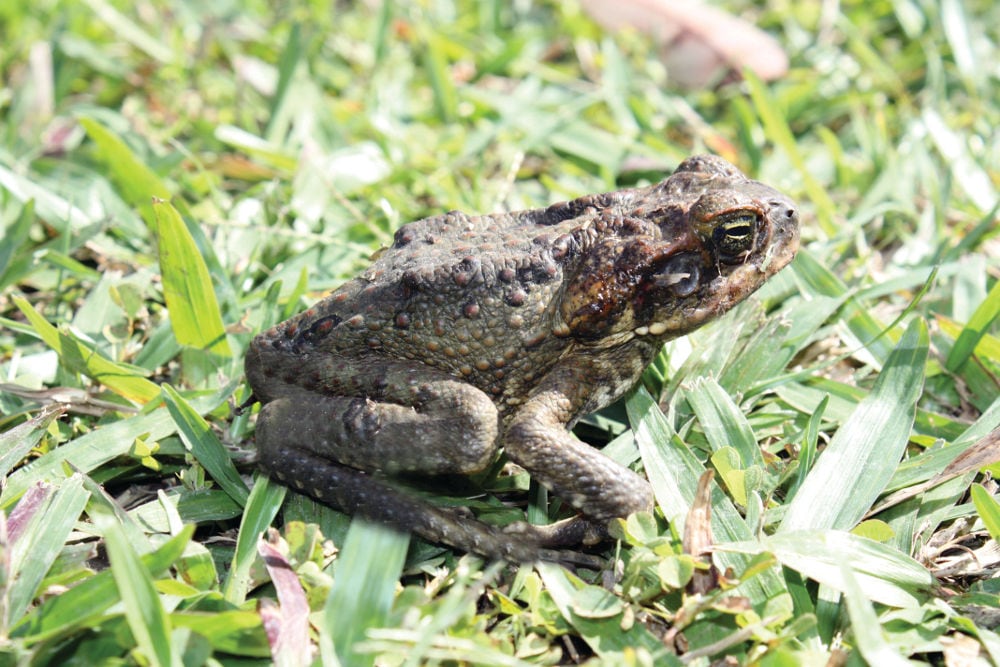The way it occurs6:17Frogs conquered the world with their poison sacs – and people helped them
There may be an invasion of frogs underfoot. No, actually. In keeping with a new study who analyzed the DNA of 124 species of frogs, can now discover them on six of the seven continents, with one colony that almost all lately unfold quickly in East Africa.
And a few scientists imagine that a lot of the frogs’ acquisition has to do with the best way the warty, tough-skinned creatures are constructed.
“They’re filled with poisons,” mentioned Chris Raxworthy, examine co-author and curator of herpetology on the American Museum of Pure Historical past. The way it occurs host Nil Koksal.
“Many frogs have enormous glands on the again of their heads, which we name parotid glands and they’re full of poisons.”
Toxins that may imply demise to any predator that tries to eat them.
Raxworthy says its analysis discovered that the evolution of the frog’s poisonous parotid glands coincided with a speedy enhance within the species on new continents tens of hundreds of thousands of years in the past, giving them “a bonus” and “the flexibility to proceed their world conquest.”
The examine, published in the Proceedings of the Royal Society B on October 15, states that the glands had been an efficient anti-predator technique that helped give the small amphibians an opportunity at survival.
The place your journey started
It began 61 million years in the past, says Raxworthy, with proof suggesting the species originated in South America. About 30 million years in the past later, Raxworthy says frogs have efficiently invaded Africa.
Precisely how these tiny amphibians crossed the nice Atlantic Ocean remains to be unclear.howeverThe examine scientists have just a few hypotheses. The primary is that they may have used Antarctica as a springboard.
“Antarctica, about 30 million years in the past, was a lot hotter than it’s now,” Raxworthy mentioned. “And the place of the continents was slightly totally different, so the dispersal distance wasn’t that far.”
The second postulation is that the amphibians may have navigated immediately by way of the lagoon utilizing floating mats of vegetation, a sort of method generally known as rafting. It might sound loopy, however Raxworthy says he noticed it along with his personal eyes.
“When there are large storms, particularly within the tropics on massive rivers, there’s financial institution erosion and falling timber, and big mats of vegetation swept downstream and out to sea,” Raxworthy mentioned.
“So it is not exhausting to think about a bunch of frogs popping out, washed out to sea on one in all these mats of vegetation. And if after just a few weeks they’re nonetheless alive and washed up on a seashore, they may really give rise to a brand new founding inhabitants.”

The scientists behind the findings “have finished a extremely good job of linking biogeography to the evolution of commerce, which isn’t quite common within the literature,” says Richard L. Essner, a professor of organic sciences at Southern Illinois College who was not concerned within the examine.
“A key issue of their success are these glands, as a result of any predator, together with, sadly, most of the native marsupial predators that attempt to assault them, finally ends up getting numerous this venom and it will possibly make them sick or result in mortality,” Essner mentioned.
Fashionable frog growth
There’s a trendy instance of this too, occurring now in Africa. Till 2014, Madagascar was one of many final locations on the planet untouched by the frog invasion.
That was till the frequent Asian frog appeared within the East African nation’s largest seaport.
“They arrived in a container, in all probability,” Raxworthy mentioned. “They’ve since unfold to a radius of 30 or 40 kilometers round their unique invasion level.”
The looks of this invasive species instantly raised alarm bells for scientists, not solely due to how rapidly they had been spreading, but in addition due to the chance they posed to Madagascar’s distinctive biota.
Essner says this vaguely echoes what occurred when cane toads had been first launched to Australia within the Nineteen Thirties to regulate native sugarcane beetles that had been damaging sugarcane crops.
In keeping with the Queensland Government website, frogs haven’t been profitable in controlling the beetles, however have had nice success in spreading them.
“They mainly took over the whole continent,” they are sayingIt is Essener.
Raxworthy fears the identical destiny could possibly be on the best way for Madagascar’s native fauna. And he says that, as with the cane toads in Australia, people appear to be unwittingly the toads’ best allies of their quest for world domination, with the toads seemingly arriving in cargo ships.
“It is unhappy for me… in Madagascar, particularly the place I’ve labored for a few years, to see these frogs coming in and invading,” Raxworthy mentioned.
“We’re at some extent the place we do not actually know methods to management it. We simply should let this organic experiment occur.”

Leave a Reply